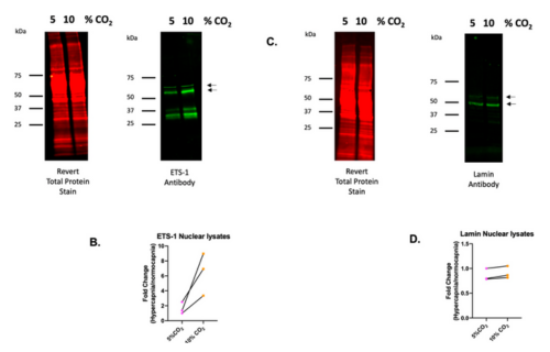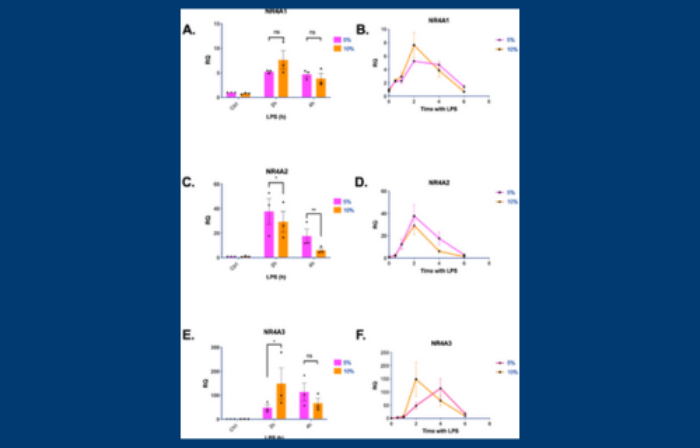 Congratulations to Post Doctoral Fellow, Dr David Phelan, Associate Professor Dr Eoin Cummins, and all the team on their recently published research in the MDPI International Journal of Molecular Sciences.
Congratulations to Post Doctoral Fellow, Dr David Phelan, Associate Professor Dr Eoin Cummins, and all the team on their recently published research in the MDPI International Journal of Molecular Sciences.
Hypercapnia occurs when the partial pressure of carbon dioxide (CO2) in the blood exceeds 45 mmHg. Hypercapnia is associated with several lung pathologies and is transcriptionally linked to suppression of immune and inflammatory signalling through poorly understood mechanisms.
In their paper, the team propose Orphan Nuclear Receptor Family 4A (NR4A) family members NR4A2 and NR4A3 as potential transcriptional regulators of the cellular response to hypercapnia in monocytes. Using a THP-1 monocyte model, they investigated the sensitivity of NR4A family members to CO2 and the impact of depleting NR4A2 and NR4A3 on the monocyte response to buffered hypercapnia (10% CO2) using RNA-sequencing.
 They observed that NR4A2 and NR4A3 are CO2-sensitive transcription factors and that depletion of NR4A2 and NR4A3 led to reduced CO2-sensitivity of mitochondrial and heat shock protein (Hsp)-related genes, respectively. Several CO2-sensitive genes were, however, refractory to depletion of NR4A2 and NR4A3, indicating that NR4As regulate certain elements of the cellular response to buffered hypercapnia but that other transcription factors also contribute.
They observed that NR4A2 and NR4A3 are CO2-sensitive transcription factors and that depletion of NR4A2 and NR4A3 led to reduced CO2-sensitivity of mitochondrial and heat shock protein (Hsp)-related genes, respectively. Several CO2-sensitive genes were, however, refractory to depletion of NR4A2 and NR4A3, indicating that NR4As regulate certain elements of the cellular response to buffered hypercapnia but that other transcription factors also contribute.
Bioinformatic analysis of conserved CO2-sensitive genes implicated several novel putative CO2-sensitive transcription factors, of which the ETS Proto-Oncogene 1 Transcription Factor (ETS-1) was validated to show increased nuclear expression in buffered hypercapnia.
These data give significant insights into the understanding of immune responses in patients experiencing hypercapnia.
For the full paper, visit here.